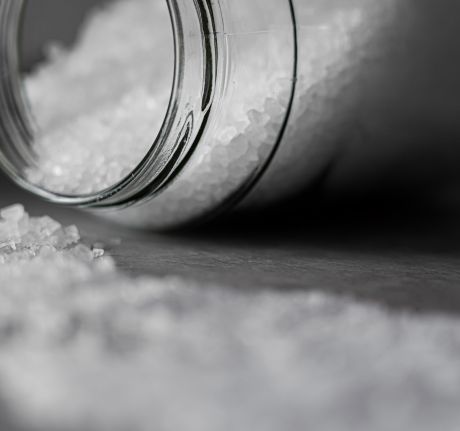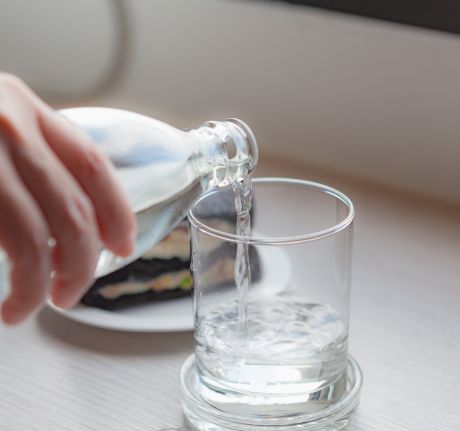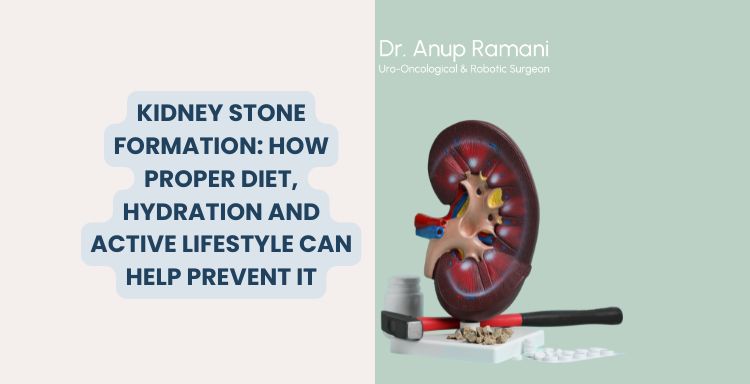Dr Anup Ramani @ Copyright 2024
By Dr. Anup Ramani
Kidney stones are a common medical condition that affects millions of people worldwide. These hard deposits, formed from minerals and salts in the urine, can develop in one or both kidneys and cause severe pain, especially when they move into the urinary tract. While some individuals may require kidney stone removal surgery, prevention is always better than treatment. By focusing on the right diet, ensuring proper hydration and maintaining an active lifestyle, you can reduce your risk of developing kidney stones and potentially avoid the need for kidney stone surgical treatment.
In this article, we will explore how diet, hydration and physical activity play key roles in preventing kidney stone formation. We will also touch on how kidney stone treatment in India has evolved and why lifestyle changes can be a first line of defense.
How Diet Affects Kidney Stone Formation?
The Importance of Balanced Calcium Intake
Calcium is a key mineral in the formation of kidney stones, but that doesn’t mean you should avoid it completely. In fact, too little calcium in the diet can lead to an increase in oxalate, a substance that binds with calcium to form calcium oxalate stones. Therefore, a balanced intake of calcium is essential for preventing kidney stones.
Instead of avoiding calcium-rich foods, it is recommended to get your calcium from dietary sources like dairy products, leafy green vegetables and fortified foods. Calcium supplements should be taken with caution, as excessive intake may contribute to kidney stone formation.
Dietary Tip: Include sources of calcium in your meals, but avoid excessive calcium supplements unless recommended by a healthcare provider.
Reducing Sodium (Salt) Intake
A high-sodium diet can lead to the formation of kidney stones by increasing the amount of calcium in the urine. Excess sodium interferes with the kidneys’ ability to process calcium effectively, leading to a higher concentration of calcium, which may contribute to stone formation. Reducing sodium intake not only helps prevent kidney stones but also supports overall kidney health.
Dietary Tip: Limit processed foods, canned goods and salty snacks. Choose fresh fruits and vegetables and use herbs and spices for flavor instead of salt.

Controlling Oxalate-Rich Foods
Oxalate is a substance found in certain foods that can combine with calcium to form calcium oxalate kidney stones. Food high in oxalates includes spinach, rhubarb, nuts, chocolate and beets. While you don’t need to eliminate oxalate-rich foods completely, it is important to balance their consumption with adequate calcium to prevent stones.
Dietary Tip: Moderate your intake of oxalate-rich foods, especially if you have a history of calcium oxalate stones. Pair oxalate-rich foods with calcium-rich foods to reduce absorption.
Uric Acid and Purine-Rich Foods
Uric acid stones are formed when there is an excess of uric acid in the urine. Uric acid is produced when the body breaks down purines, which are found in certain foods, especially red meat, shellfish and organ meats. Consuming large amounts of purine-rich foods can increase the risk of uric acid stones.
Dietary Tip: Reduce consumption of purine-rich foods and maintain a balanced intake of lean proteins, including chicken, fish and plant-based protein sources like beans and lentils.
What Our Patients Are Saying
The Role of Hydration in Preventing Kidney Stones
Drinking Enough Water

Hydration is one of the most important factors in preventing kidney stones. When the body is dehydrated, urine becomes more concentrated, which increases the risk of stone formation. By drinking plenty of water, you dilute the substances in urine that contribute to stone formation. Ideally, you should aim to drink enough water to produce at least 2 to 2.5 liters of urine per day, which may help prevent the formation of kidney stones.
Hydration Tip: Aim for at least 8-10 cups of water daily. If you live in a hot climate or exercise frequently, you may need to drink more.
Avoiding Sugary and Caffeinated Beverages
While hydration is important, the type of fluids you consume also matters. Sugary drinks, like sodas and fruit juices, can increase the risk of kidney stones, particularly in individuals prone to calcium oxalate stones. Likewise, caffeinated beverages such as coffee and tea may have a mild diuretic effect, leading to dehydration if consumed in large amounts.
Hydration Tip: Opt for water, herbal teas and natural fruit-infused waters, while limiting sugary and caffeinated drinks.
How an Active Lifestyle Can Help Prevent Kidney Stones
Exercise and Weight Management
Being overweight or obese is a known risk factor for developing kidney stones. Excess weight can lead to changes in urine composition, such as increased calcium and uric acid levels, which contribute to stone formation. Regular physical activity helps maintain a healthy weight and promotes overall kidney health.
Lifestyle Tip: Engage in at least 30 minutes of moderate exercise, such as walking, swimming or cycling, on most days of the week.
Preventing the Formation of Uric Acid Stones
Uric acid stones are commonly linked to metabolic disorders and obesity. Exercise helps regulate blood sugar and improves overall metabolism, both of which can reduce the risk of uric acid stone formation.
Lifestyle Tip: Incorporate strength training and aerobic exercises into your routine to maintain a healthy metabolism.
Reducing the Risk of Recurrence
For those who have already experienced a kidney stone, maintaining an active lifestyle can help prevent recurrence. Regular exercise supports overall health, aids in weight management and promotes better hydration. Together, these factors can reduce the likelihood of forming new stones.
Lifestyle Tip: Focus on a combination of aerobic and strength-training exercises to maintain muscle mass, metabolism and overall health.
Conclusion
Kidney stones can cause significant discomfort and pain and in some cases, kidney stone removal surgery may be necessary. However, preventing kidney stones from forming in the first place is the best approach. A balanced diet, proper hydration and an active lifestyle are key components in reducing the risk of kidney stones. By following these preventive measures, you can significantly lower the likelihood of needing kidney stone surgical treatment in the future.
If you’re experiencing symptoms related to kidney stones or have concerns about your risk, consider consulting with Dr. Anup Ramani, kidney stone surgeon for personalized guidance, including advanced surgical options, is widely available and by focusing on lifestyle changes, you can take an active role in protecting your kidney health.
FAQs
How can diet help prevent kidney stones?
A balanced diet rich in calcium, low in sodium and moderate in oxalates and purines can help prevent the formation of kidney stones. Hydrating well is also essential to dilute the substances in urine that contribute to stones.
How much water should I drink to prevent kidney stones?
Aim for 8-10 cups of water daily or enough to produce 2 to 2.5 liters of urine per day. Proper hydration helps reduce the risk of stone formation by diluting substances in the urine.
What foods should I avoid if I'm prone to kidney stones?
Avoid foods high in oxalates (like spinach and chocolate), excessive salt and purine-rich foods (like red meat and shellfish). Limiting sugary drinks and caffeine also helps.
How does an active lifestyle help prevent kidney stones?
Regular exercise helps maintain a healthy weight, which reduces the risk of kidney stones. It also promotes hydration and metabolism, both of which are important in preventing stones.
About Author

Uro-Oncological & Robotic Surgeon
Dr. Anup Ramani is a robotic uro-oncological surgeon and an internationally recognized expert in robotic surgery for prostate, kidney and urinary bladder cancers. With more than two decades of robotic experience and 2,000+ robotic procedures, he brings unmatched precision and outcomes to complex uro-oncology cases. He is widely published in his field and is known for a personal, transparent approach-often spending over an hour in initial consultations to educate patients on its disease, surgery and recovery. His expertise spans prostate cancer treatment, kidney and bladder cancer surgery, adrenal gland surgery, kidney stone treatment, penile cancer surgery and enlarged prostate management. Dr. Ramani advocates the advantages of robotic surgery-magnified 3D vision, tremor-filtered precision, minimal scarring, lower blood loss and faster recovery-helping patients return to life sooner.
Best Uro-Oncological surgeon
Specialist in India for Robotic Surgery
MCh, DNB, MS, DNB
Dr. Anup Ramani
CONTACT
Uro-Oncologist in India,
Best Robotic Surgeon for Uro Oncology Surgery
1407, One Lodha Place Next to World Towers Senapati Bapat Marg, Worli, Mumbai. 400013.
Dr Anup Ramani @ Copyright 2024 – Website Maintenance, SEO & GEO by Opal Infotech
- Partial penectomy is done in cases where glans and distal penis is involved with carcinoma.
- Partial penectomy is a type of organ-preserving surgery. Preservation of sexual and micturational function depends on the surgical dissection and reconstruction of residual urethra.
- Patients who develop stones in the kidney or ureter, often experience severe pain.
- This condition usually needs a procedure to remove the kidney stones.
- This procedure is called ureteroscopy and is performed very commonly.
- It does not require any cuts and hence it is painless.
- The procedure is performed with an endoscope inserted through the penis under spinal anesthesia.
- The scope is inserted through the penis into the kidney and stones are dissolved with a laser.
- The procedure takes about 40-50 minutes.
- A catheter (urine pipe) is kept after the procedure to drain the bladder. A stent is kept in the kidney at the same time.
- Patient is mobile and walking in the room the same evening.
- Hospital stay is one night and patient is discharged the next day after removal of the catheter.
- Patient has to come back after six weeks to remove the stent in the kidney.
- Patients can resume office a week after surgery and heavy activities like running, weight lifting, a month after the procedure.
- We offer fixed packages for this procedure which can be obtained by calling our helpline +91 9967666060.
- Men with an enlarged prostate, which is a normal ageing changes, often experiencing difficulty passing urine. This condition usually needs a procedure to trim the prostate and relieve the blockage.
- This procedure is called TURP and is performed very commonly.
- It does not require any cuts and hence it is painless.
- The procedure is performed with an endoscope inserted through the penis under spinal anaesthesia.
- The overgrown prostate is dissolved with a laser bloodlessly.
- The procedure takes about 40 minutes.
- A catheter (urine pipe) is kept after the procedure to drain the bladder.
- Patient is mobile and walking in the room the same evening.
- Hospital stay is two nights and patient is discharged with the catheter, which is removed after 4 days.
- Patients can resume office a week after surgery and heavy activities like running, weight lifting, a month after the procedure.
- We offer fixed packages for this procedure which can be obtained by calling our helpline +91 9967666060.
-
Robotic adrenalectomy is a sophisticated, complex surgery and it is very important that an experienced surgeon performs this surgery to avoid major complications.
-
Once the anesthesia is done, and patient positioned, three micro cuts (3mm each) are made in the patient’s abdomen.
-
The arms of the Da Vinci robot are connected to the cuts via ports (tubes).
-
Dr. Ramani then sits in the controlling console to perform the surgery.
-
On an average, a robotic adrenalectomy takes one hour.
-
The surgery is almost completely bloodless and there has never been any need to transfuse blood after surgery.
-
A urine catheter and bag to drain the bladder is inserted during surgery.
-
A tiny drain pipe may be inserted in the surgical side of the abdomen, connected to a bag.
-
Patient is kept nil-by-mouth the day of the surgery, with IV fluids. Sips of water are started the next day and solid food by day three.
-
The drain pipe, if kept, is removed in the room on day 2 after surgery.
-
The catheter is removed on day two after surgery.
-
Total hospital stay for robotic adrenalectomy is 4 nights (including night before surgery).
-
Post discharge, a doctor from the surgical team visits the patient at home/ hotel room once every day.
On the day of discharge, patient is totally self-sufficient. They are able to walk freely without any pain, dress themselves, shower, toilet and they do not need to hire any nurse or help at home. Almost all patients are back to work within 2 weeks of surgery.
Heavy activities like running, weight lifting can be resumed after a month
Follow up after an adrenalectomy is in the form of CT scans, once a year for 5 years.
Local patients usually meet Dr. Ramani after two weeks to discuss report.Outstation patients are counselled on a phone consultation.
- Dr. Ramani is one of the very few surgeons in India who has the expertise to perform a robotic surgery for bladder cancer, which includes removing the urinary bladder and reconstructing a new bladder robotically.
- Robotic radical cystectomy is an extremely sophisticated, complex surgery and it is very important that an experienced surgeon performs this surgery to avoid major complications.
- Once the anaesthesia is done, and patient positioned, six micro cuts (3mm each) are made in the patient’s abdomen.
- The arms of the Da Vinci robot are connected to the cuts via ports (tubes).
- Dr. Ramani then sits in the controlling console to perform the surgery.
- On an average, a robotic radical cystectomy with an ileal conduit takes 3-4 hours.
- The surgery is almost completely bloodless and there has never been any need to transfuse blood after surgery.
- A urine catheter and bag to drain the new bladder is inserted during surgery.
- Two tiny drain pipe in inserted in the surgical side of the abdomen, connected to a bag.
- Patient is kept nil-by-mouth for 4 days after surgery with IV supplementation of patient’s daily requirements of calories, fats, carbohydrates, proteins and electrolytes.
- The drain pipes are removed in the room on day 3-5 after surgery.
- Total hospital stay for radical cystectomy is 8 nights (including night before surgery).
- Post discharge, a doctor from the surgical team visits the patient at home/ hotel room once every day.
- On the day of discharge, patient is totally self-sufficient. They are able to walk freely without any pain, dress themselves, shower, toilet and they do not need to hire any nurse or help at home.
- Almost all patients are back to work within 6 weeks of surgery. Heavy activities like running, weight lifting can be resumed after two months.
Follow up after a radical a cystectomy is in the form of CT scans, once a year for 5 years.
Histopathology report: Local patients usually meet Dr. Ramani after two weeks to discuss report.
Outstation patients are counselled on a phone consult. Depending on the report, patient may or may not need chemotherapy after surgery.
If chemo is needed, patients may choose to get it done with a medical oncologist of their choice or avail the services of one of the four medical oncologists on our team.
- Robotic partial nephrectomy is a sophisticated, complex surgery and it is very important that an experienced surgeon performs this surgery to avoid major complications. Robotic radical (total) nephrectomy is
- relatively easier but still requires significant experience to consistently deliver results.
- Once the anaesthesia is done, and patient positioned, five micro cuts (3mm each) are made in the patient’s abdomen.
- The arms of the Da Vinci robot are connected to the cuts via ports (tubes).
- Dr. Ramani then sits in the controlling console to perform the surgery.
- On an average, a robotic radical nephrectomy takes one hour and a robotic partial nephrectomy takes about an hour and half.
- The surgery is almost completely bloodless and there has never been any need to transfuse blood after surgery.
- A urine catheter and bag to drain the bladder is inserted during surgery.
- A tiny drain pipe in inserted in the surgical side of the abdomen, connected to a bag.
- Patient is kept nil-by-mouth the day of the surgery, with IV fluids. Sips of water are started the next day and solid food by day three.
- The drain pipe is removed in the room on day 3 after surgery. The catheter is removed on day two after surgery.
- Total hospital stay for radical/partial nephrectomy is 4 nights (including night before surgery).
- Post discharge, a doctor from the surgical team visits the patient at home/ hotel room once every day.
- On the day of discharge, patient is totally self- sufficient.
- They are able to walk freely without any pain, dress themselves, shower, toilet and they do not need to hire any nurse or help at home.
- Almost all patients are back to work within 2-3 weeks of surgery.
- Heavy activities like running, weight lifting can be resumed after a month.
- Follow up after a radical/partial Nephrectomy is in the form of CT scans, once a year for 5 years.
- Local patients usually meet Dr. Ramani after two weeks to discuss report.
- Outstation patients are counselled on a phone consultation.





